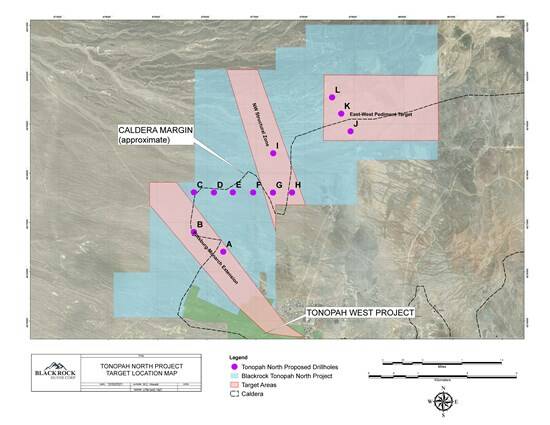Drilling to begin on Tonopah North project
Canada-based Blackrock Silver Corp. is expected to soon commence drilling on its Tonopah North project, which covers about eight square miles along the Walker Lane trend of Western Nevada.
The project is located immediately west of Tonopah on the north side of U.S. 95 and west of Radar Road.
It aims to test two silver-gold concepts associated with parts of Tonopah Caldera and the lithium potential within parts of Siebert Formation.
Lithium is a key component in rechargeable batteries for electric cars and other technologies, and Nevada is at the growing epicenter for the industry. But the mining of lithium remains somewhat controversial because of its destruction of the environment.
In 2020, Fraser Institute — an independent non-partisan think tank based in Canada — named Nevada as the top mining jurisdiction in the world based on investment attractiveness.
Andrew Pollard, CEO of Blackrock Silver Corp. said he expects 2022 to be a pivotal year for the company as it focuses on expanding and continuing the search for “new discoveries in the shadows of where historic miners left off nearly a century ago.”
“With over 110,000 metres of drilling under our belt on the Tonopah silver district, which has sharpened our understanding of the key structural controls that shape this prolific silver-gold system and benefitting from technology that wasn’t available to the old-timers, we’ve delineated multiple new targets with district-scale potential and are excited to finally test them with the drill-bit,” he said.
Company officials did not release a date when drilling on the project would begin.
Blackrock Silver Corp. was formerly known as Blackrock Gold Corp.
The company changed its name in March 2021 to better reflect the nature of its flagship project in Tonopah.
“While most think of Nevada as having a massive gold endowment, to this day Nevada is still known as the Silver State,” Pollard said about the name change. “The Tonopah silver district, second to only the Comstock Lode in terms of historic production, is a large part of that reason.”

















